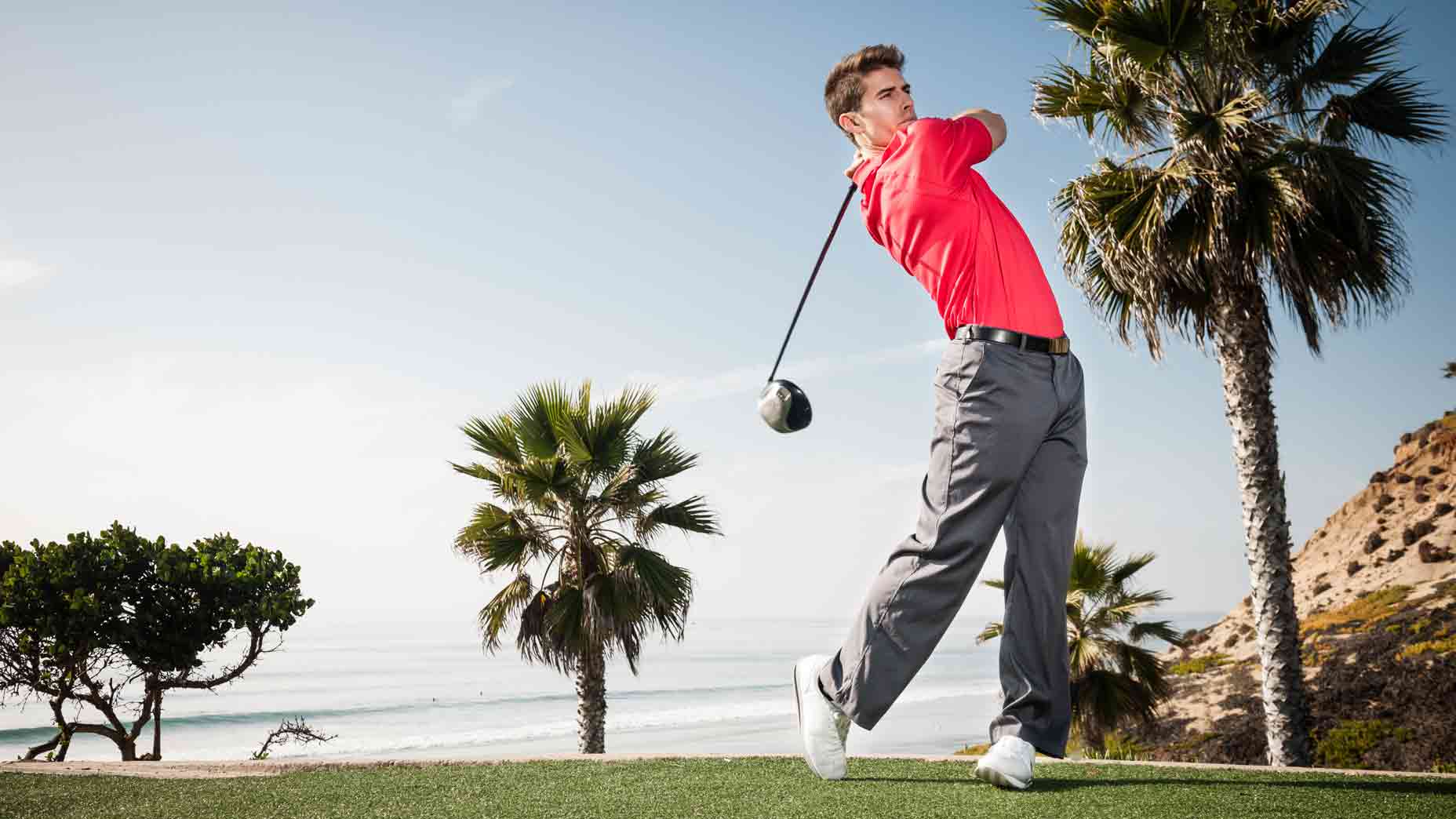3 ways to add more natural power to your golf swing
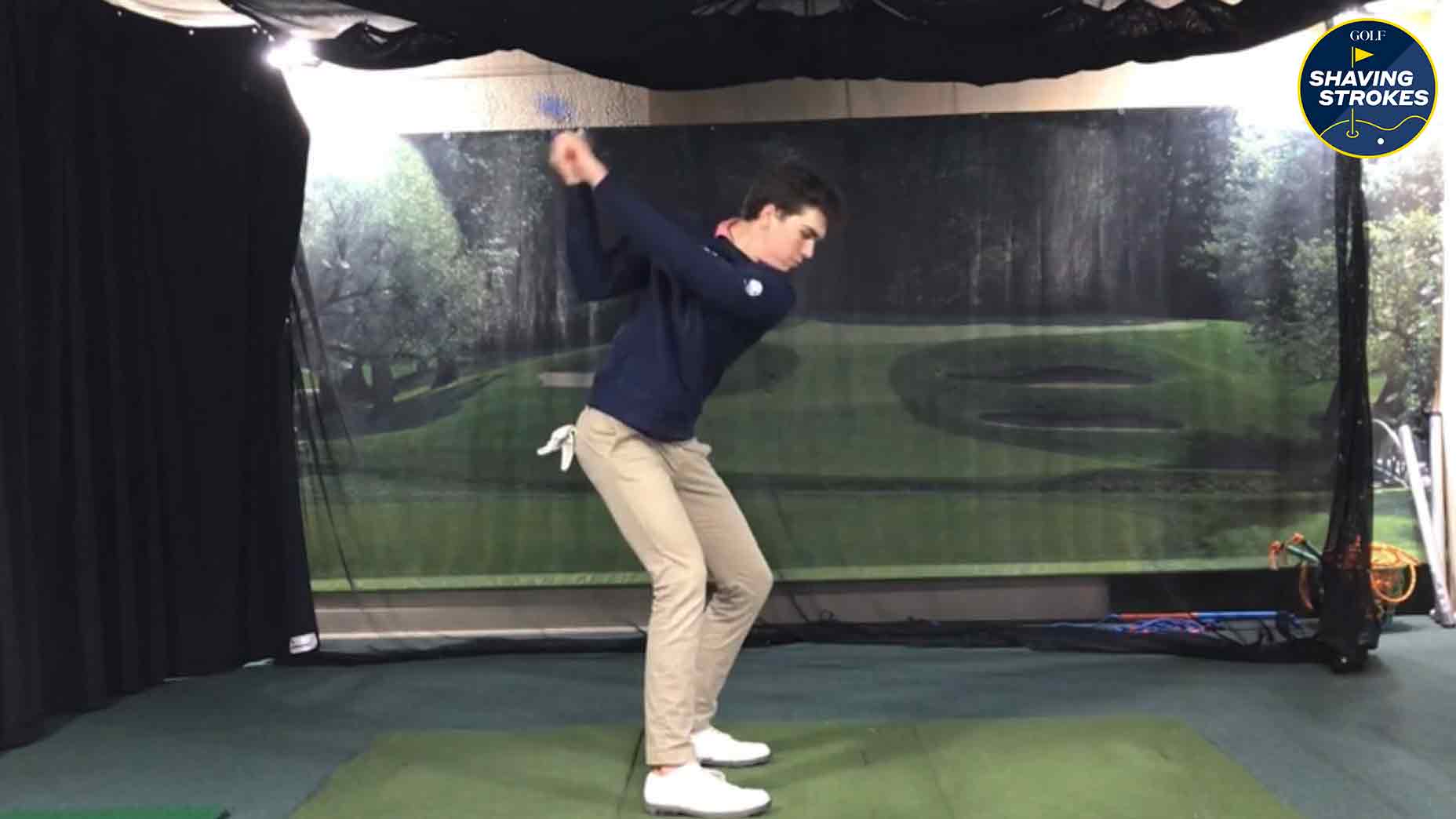
You don’t need to go through hug swing adjustments to start seeing major gains off the tee.
Images via E.A. Tischler
Welcome to Shaving Strokes, a GOLF.com series in which we’re sharing improvements, learnings and takeaways from amateur golfers just like you — including some of the speed bumps and challenges they faced along the way.
While we all want to hit the ball straight, for so many reasons, every amateur golfer is obsessed with getting more distance on their shots — especially with the driver. Longer shots typically mean fewer shots to reach the green, leading to better scoring opportunities.
But anyone who’s gripped a golf club and swung out of their own shoes knows this isn’t the path toward actually hitting it longer. In fact, for mid- to high- handicappers, the opposite tactic is often most effective.
Since many of us average golfers lack the fundamentals to increase our swing speeds and still maintain proper sequencing, when we just swing as hard as we can, it usually leads to a clubface that’s anything but square. The key is controlled speed and intentional power while avoiding all the common swing flaws.
How best to execute this? I asked GOLF Top 100 Teacher E.A. Tischler for three natural power moves.
3 ways to gain more power in the golf swing
When I asked Tischler about ways to gain more power, first he gave me three natural ways to get that added firepower, and then he explained how he helped a student of his named John generate added speed for more distance (see below).
1. Improve your physical strength
Bryson DeChambeau’s physical transformation years ago is a perfect example of this, as he hit the weights and bulked himself up — with a big part of his plan to try and gain more strength and distance by developing muscle mass.
Tischler said the everyday player doesn’t need to go so far as DeChambeau did, but says there are benefits in improving your physical strength.
“There are a variety of ways to gain more power through athletic training,” he said. “If you want to go that route, I suggest find a certified personal trainer, conditioning coach, or another expert in the field to assist you. Improper training invites injury.”
2. Use speed training to develop more controlled club speed
Speed training is a popular trend, with many players looking to gain more clubhead speed to bomb their drives. Tischler said he sees players use a variety of training aids and apps that program a plan to generate more speed and power.
“In my experience, [any training aids or swing trainers] that come with an app to guide you through the process are the most beneficial,” Tischler said. “I’ve had students gain significant speed and power using those built-in plans, rather than simply winging it on their own.”
Tischler also said that each player should set expectations when using any training aids, as not every golfer will see huge gains.
“Certain golfers gain a lot from speed training, while others may see very little. I think this has a lot to do with body type, athletic conditioning, and their overall skillset,” he said. “In general, most speed training programs help golfers who need to improve the transfer of energy from their hands to the clubhead, so if you’re already good in that area, you might not gain a lot from the trendy speed training programs.”
3. Sequencing can help effectively apply more power and speed
As mentioned above, when a player starts swinging recklessly for added distance, it usually ends poorly. This is because their sequencing gets out of whack, often costing them any opportunity at squaring the clubface and making center-face contact.
This is why Tischler says focusing on your sequencing and tempo is so important when seeking more power.
“If you’re a player who already has strength and speed, but lack the distance you hope for, it could come down to your swing technique — which is where sequencing comes into play,” he said. “There are all kinds of training aids and drills to help with sequencing, most of which are tailored to the individual based on their athletic conditioning, body type, and swing mechanics.”
So, how does Tischler help his students in this area? He prefers to start with training ropes.
“I make custom speed ropes and core ropes, helping my students learn the benefits of each,” he said. “We also work on linking up the kinetic chain, using drills that help synchronize their ground force pattern, pivot, and arm swing.”
Next, Tischler dived into the three power segments he says every player needs to understand (and apply!) to experience the distance gains they’re seeking.
The 3 power segments
The three power segments, Tischler said, are the lower body power segment, the mid-section power segment and the distal end power segment.
How does each work in the golf swing, and how was Tischler able to help his student, John, apply them for more power? He explains below.
1. The lower body power segment
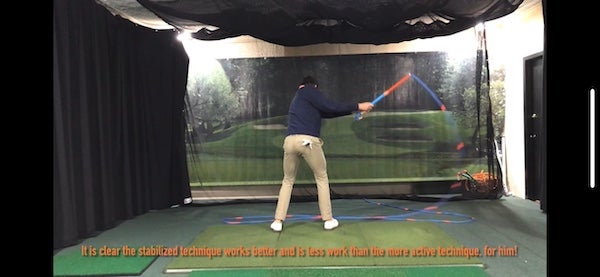
E.A. Tischler
“This involves understanding how to use the body from the waist down, which helps develop a sound ground force pattern,” Tischler said. “We often call the action produced by the lower body power segment ‘The Dance’.
“When you learn your best dance, you find that you truly start producing power from the ground up. I use two different types of rope training exercises to help golfers internalize this feeling in order to apply it to the course.”
2. The mid-section power segment
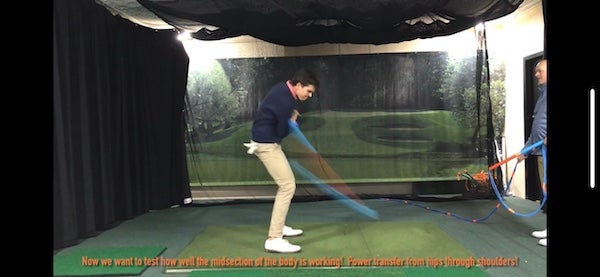
E.A. Tischler
“The mid-section power segment is what we generally call ‘The Core,’ as it’s the segment from the waist through the thorax,” Tischler said. “When you effectively use the core, it links up the kinetic chain from the ground (using the lower body) through the mid-section and into the arm swing. Simply put, we all tilt and turn during the golf swing. However, some of us are built to tilt more, while others are built to turn more horizontally.
“Think of the body as having a continuum down the middle of your body. When you find yourself on the wrong side of the continuum your joints get locked up or stuck, which I call being in Stuck 3.0.
“Stuck 1.0 is the classic mistake of firing your hips and leaving your arms behind. Stuck 2.0 is getting the lead arm stuck in front of the body as the body outraces the arms, leaving the hands behind. Stuck 3.0 is having the joints lock up and prematurely slow the pivot down — which almost always ends up with the golfer getting hurt.”
The distal end power segment
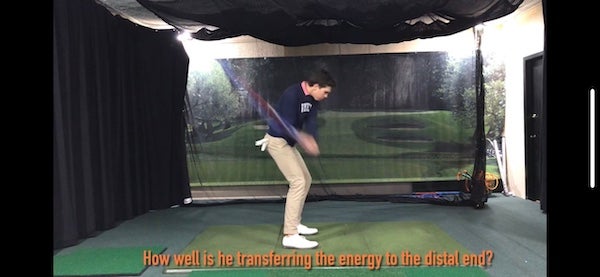
E.A. Tischler
“The distal end power segment is what’s commonly known as ‘The Arm Swing’, which involves the arms, wrists, hands and the club effectively transferring the energy through those components to flow as much energy as possible to the clubhead,” Tischler said.
“With proper guidance, we typically see students achieve huge gains in that area while engaging in distal end power segment during training. By using speed ropes, core ropes, swing whiffles, or impact bags, we can help students achieve tremendous gains in this area.”
By assessing how you can effectively use these three power segments, tailoring them to your specific body frame, and learning to link them up in unison, you can works toward hitting your club speed goals.
TheStack Swing Speed Trainer (Hardware + App Bundle)
$314 (was $349)
TheStack Hardware
5 milled Stack weights enable 30 weight combinations between 0g and 300g
Dual-purpose weight case / phone stand
Highly engineered training club – Adult (41.5″) or Junior (38.5″) version (see Fitting Juniors)
Speed radar not included. View all compatible devices here. We recommend the PRGR
TheStack App Training
2-year License included, accessible on iOS only.
Dynamic speed training formulated by Dr. Sasho MacKenzie
Guided workout timer for reps, sets, and rest intervals
Custom speed metrics to track your gains
Hands-free data entry using voice entry technology
Includes access to Stack Putting (Beta) – Learn more
Includes Single User License – Enables training and tracking for up to five local (i.e. family) users under one login.
Multi-user Coaches License license sold separately.
Access TheStack App from the App Store when your order arrives. Requires iOS 15.0 or later.
View Product
Related
5 Things I Never Play Golf Without: David Dusek
Our 11-handicap equipment writer always brings his favorite divot repair tool, a portable speaker and some high-tech gear to the course.As long as the weather i
Donald Trump’s golf course wrecked by pro-Palestine protesters
Pro-Palestinian protesters have vandalized parts of U.S. President Donald Trump's golf course in Scotland in response to his proposal for the reconstruction of
Man holding Palestinian flag scales London’s Big Ben hours after…
CNN — Emergency services were called to London’s Palace of Westminster on Saturday a
EPD: Drunk driver parked car on golf course
EVANSVILLE, Ind. (WFIE) - Evansville police say they arrested a man after finding him drunk in his car that was parked on a golf course.Officers say they were c

